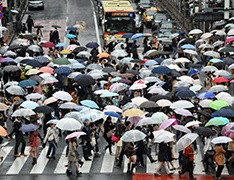 For tax purposes, workers are divided into two categories: employees and independent contractors. Impacting this division is the recent Dynamex Operations West, Inc. v. Superior Court of Los Angeles ruling, in which the California Supreme Court issued an opinion that appears to expand the California definition of employee.
For tax purposes, workers are divided into two categories: employees and independent contractors. Impacting this division is the recent Dynamex Operations West, Inc. v. Superior Court of Los Angeles ruling, in which the California Supreme Court issued an opinion that appears to expand the California definition of employee.
The Borello Rule
For many years, California courts and state agencies applied the Borello test to determine whether an individual was an employee or independent contractor.
This multifactored classification test was derived from a 1989 California Supreme Court case—S.G. Borello & Sons, Inc. v. Department of Industrial Relations—and focused on eleven factors, but it was primarily concerned with whether a company had the right to control how work was performed.
The New ABC Rule
On April 30, 2018, the Dynamex Operations West, Inc. v. Superior Court of Los Angeles ruling established a three-pronged test referred to as the ABC test. Under this test, a worker is presumed an independent contractor only if the worker meets the following three criteria:
Free from Employer Control and Direction
The employee must be free from the employer’s control and direction, both under the terms of the agreement between the hiring entity and the worker as well as in the actual completion of the work.
This is important because under the new standard, the employer doesn’t have to actually control the work that’s done. If the employer has the right to do so—similar to the Borello test—that’s enough to fail to meet this criterion.
Performs Services Outside Usual Course of Business
The worker has to perform a service that’s outside the usual course of the business for which the service is performed.
This factor likely extends to consider whether a service is performed outside of the employer’s places of business for which the service is performed. It also takes into account the same line of business test. Because of its breadth, this is the criteria that’s most concerning for businesses.
Engages in Independent Trade or Occupation
The worker must customarily engage in an independently established trade, occupation, profession, or business.
Within these three points, defining usual course of business of the hiring entity is key. In its ruling, the court explained that if, for example, a retail store hired an outside plumber to repair a leak, that work wouldn’t qualify as performing the usual course of the store’s business. On the other hand, a cake decorator that regularly works for a bakery is likely to be an employee, as is a seamstress hired by a clothing manufacturer.
Ultimately, the new test seems to require an individual worker already be part of a separate business outside of the one for which he or she is doing work as well as work in a customarily independent profession to qualify as an independent contractor. It’s unclear whether newly created professions will be able to gain customary status.
What California Employers Can Do
The new rule will affect companies in the Bay Area, Silicon Valley, and throughout California, likely resulting in significantly increased costs. For some small businesses operating on a thin budget, this ruling could even result in a cessation of doing business in California.
Employers should be aware the California Employment Development Department is already using the new ABC test standard to review employment relationships for purposes of determining employment taxes.
Review Work Arrangements
California employers that have entered into work arrangements with individuals other than those traditionally deemed independent contractors, such as electricians, plumbers, and HVAC professionals, should promptly and carefully review the status of those workers—particularly if they were previously classified as employees.
Examine Provided Services
Businesses operating in California that treat workers as independent contractors will also want to closely examine the types of services provided by those individuals. If hired-on services aren’t clearly outside the scope of the entity’s business operations, the business should carefully consider whether these workers need to be reclassified as employees.
We’re Here to Help
For more information about how the new ruling affects the work arrangements your organization has in place, contact your Moss Adams professional.